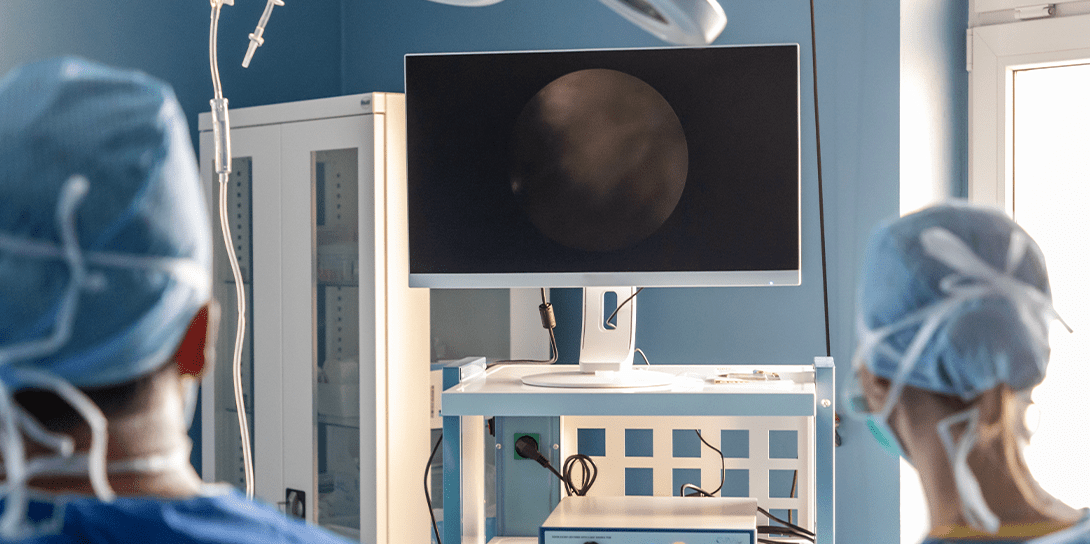Arthroscopy (Keyhole Surgery) in Singapore:
Ankle, Knee, Shoulder, and Elbow Treatments

What Is an Arthroscopy (Keyhole Surgery)?
During the procedure, an orthopaedic surgeon inserts the arthroscope and small surgical instruments through small incisions around the affected joint. This allows the surgeon to examine the interior of the joint and perform necessary repairs, such as addressing torn ligaments, cartilage damage, or joint instability. Arthroscopy is an effective solution for faster recovery and reduced discomfort compared to traditional surgery.
What Does Arthroscopy (Keyhole Surgery) Help to Treat?
Arthroscopy helps treat conditions that are inflamed, acute or chronic injuries. The most frequent joints are located at the:
- Ankle
- Elbow
- Foot
- Knee
- Shoulder
Ankle Arthroscopy
Who needs a Ankle Arthroscopy?
Ankle arthroscopy is a surgical procedure used to treat issues within the ankle joint. It is typically recommended for individuals experiencing ankle pain or other problems that do not respond to non-surgical treatments. Additionally, those facing mobility difficulties due to ankle joint issues may also be good candidates for this treatment.
Some conditions that require an ankle arthroscopy include:
- Instability
- Impingement
- Removal of any cartilage, bone pieces or scar tissues
- Torn ligaments
During this procedure, a surgeon will insert an arthroscope and other tools through a small incision at your ankle joint to treat it.
Elbow Arthroscopy
Who needs an Elbow Arthroscopy?
If pain persists after non-surgical treatments, an elbow arthroscopy may be recommended. This procedure can alleviate painful symptoms associated with various conditions that damage the cartilage surfaces and soft tissues around the joint. The surgeon may remove loose pieces of bone or cartilage and release scar tissue that restricts mobility. Treatment will be tailored based on the specific diagnosis.
Knee Arthroscopy
Who needs a Knee Arthroscopy?
Knee arthroscopy may be recommended for individuals with knee problems, especially if conservative treatments fail to relieve pain. After a thorough examination, the surgeon will determine if knee arthroscopy is appropriate. Common situations that may require this procedure include:
- Diagnosing knee problems
- Meniscus tears
- Ligament injuries
- Cartilage damage
- Removal of loose bodies
- Synovial tissue biopsy
- Treatment for knee infections
While arthroscopic knee surgery can effectively relieve pain, it’s important to note that not all knee problems require surgery; many can be treated with non-surgical options.
Shoulder Arthroscopy
Who needs a Shoulder Arthroscopy?
Shoulder arthroscopy helps treat shoulder conditions and relieve painful symptoms of damaged rotator cuff tendons, labarum, articular cartilage and other soft tissues surrounding the joint. Other common arthroscopic procedures include:
- Rotator cuff repair
- Removal or repair of the labarum
- Repair of ligaments
- Removal of inflamed tissues or loose cartilage and repair for recurrent shoulder dislocation
What Happens During an Arthroscopy Procedure?
During an arthroscopy procedure, anesthesia is administered around the affected area. An orthopedic surgeon then makes small incisions in the skin to insert an arthroscope into the joint. Once the arthroscope is in place, small surgical instruments repair damaged bones or connective tissues.
After the surgery, a recovery plan will be provided to ensure proper healing. Depending on the procedure’s location, patients may be able to return home the same day or may need to stay overnight for observation. Recovery time varies, but it can take several months, often including physiotherapy, to fully regain stability, strength, and range of motion.
